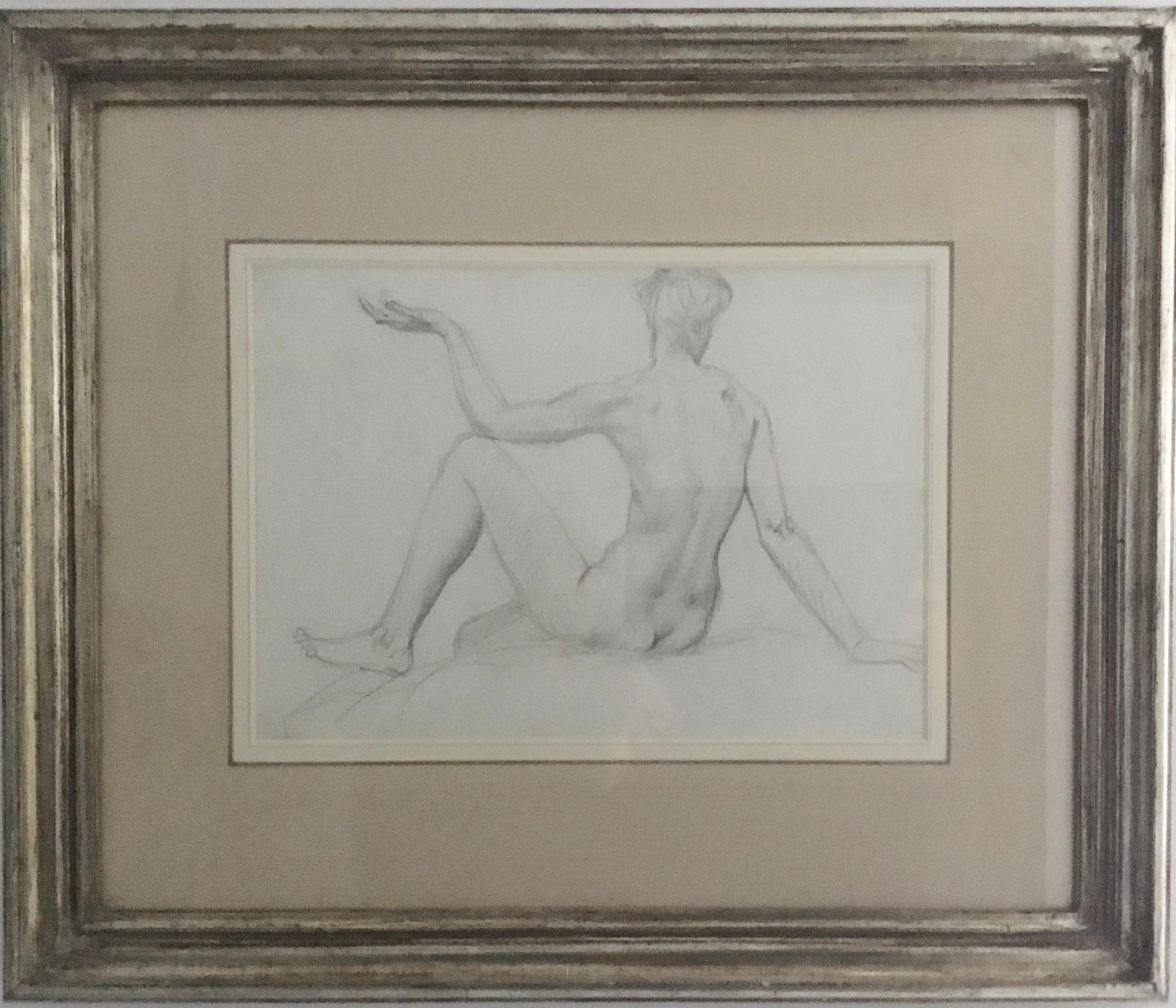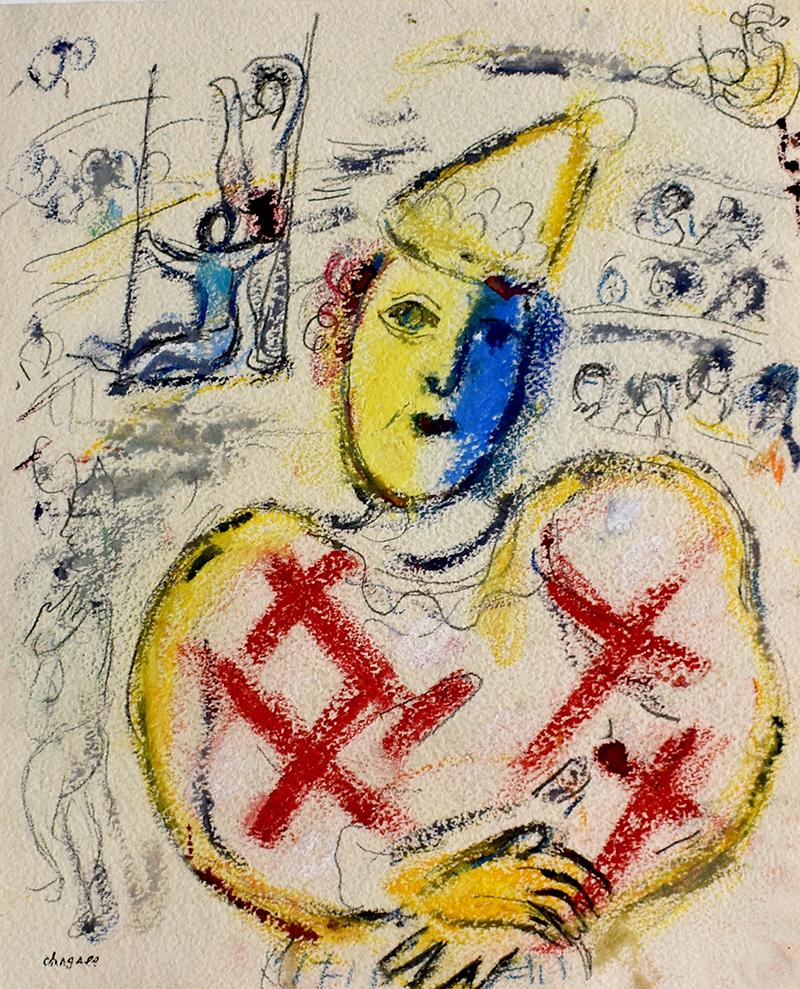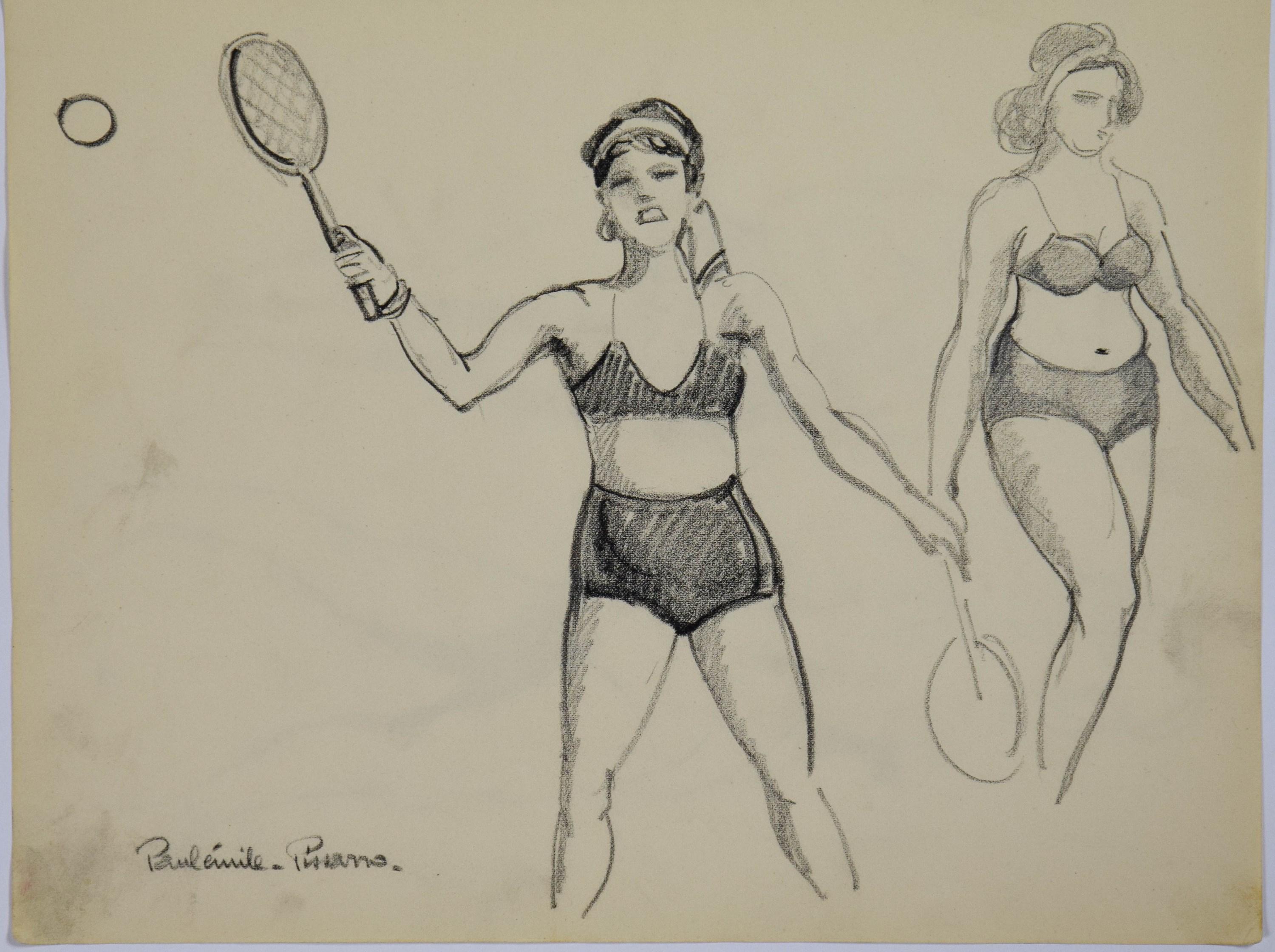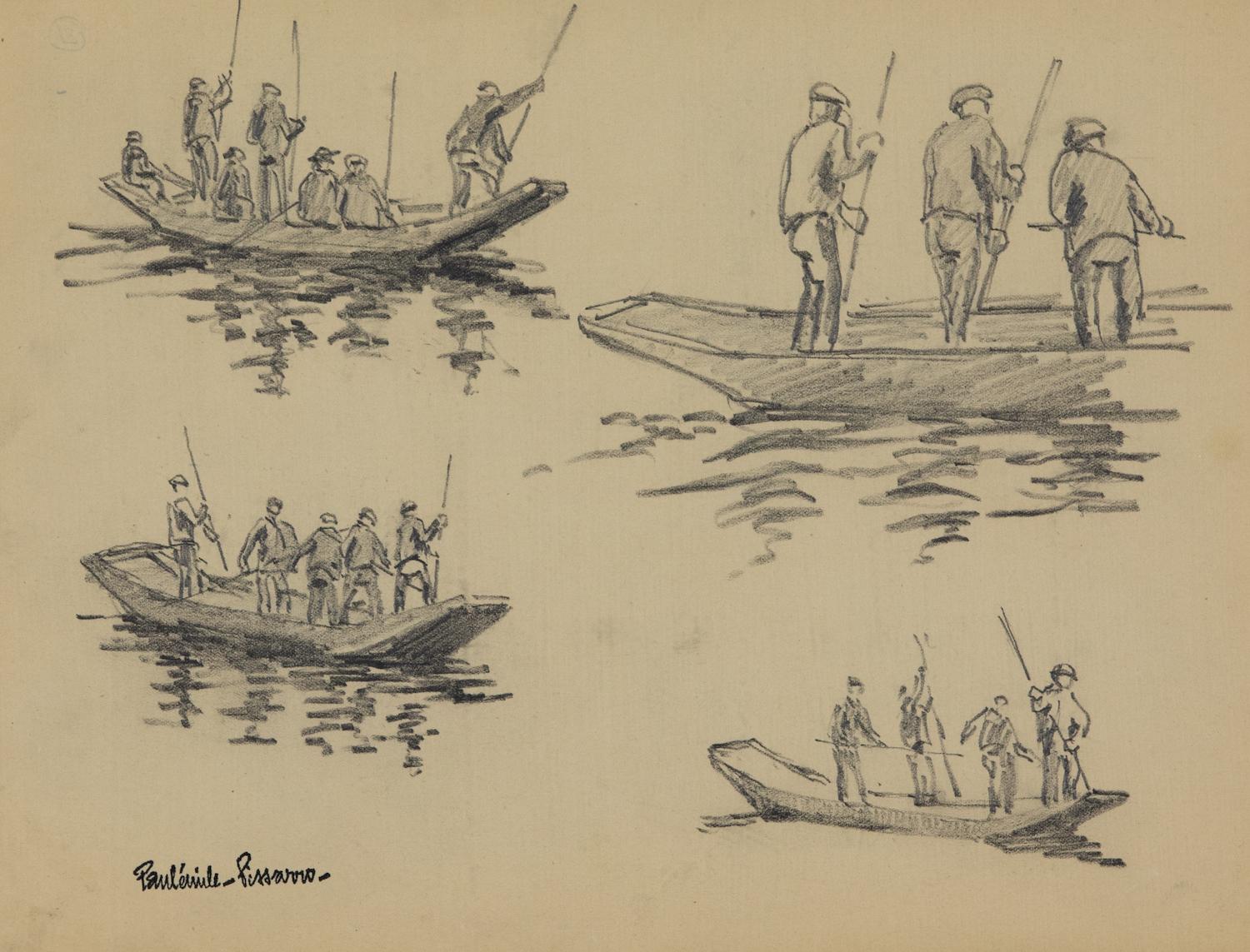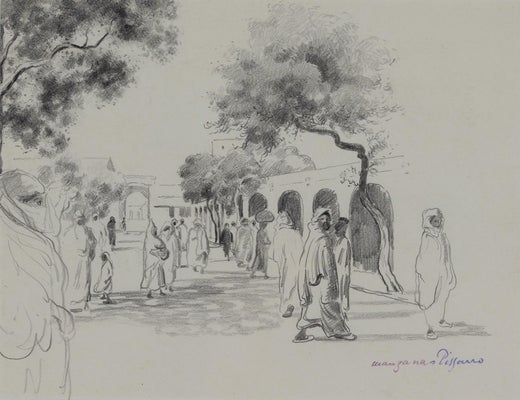Georges Henri Manzana PissarroWoman Standing by Georges Manzana Pissarro - Pencil on paper
About the Item
- Creator:Georges Henri Manzana Pissarro (French)
- Dimensions:Height: 10.52 in (26.7 cm)Width: 8.27 in (21 cm)
- Medium:
- Movement & Style:
- Period:
- Condition:
- Gallery Location:London, GB
- Reference Number:1stDibs: LU26127447722
Georges Henri Manzana Pissarro
Georges-Henri Pissarro, better known as Manzana, was born in Louveciennes, the third of Camille Pissarro and Julie Vellay’s seven children.
He studied with his father from a very early age and, like Lucien — Camille and Julie's eldest son — he spent his formative years surrounded by distinguished artists of the Impressionist movement, such as Monet, Cézanne, Renoir and Gauguin, all of whom frequented the Pissarro home. At his father's side he learned not only to handle brush and pencil but also to observe and to love nature.
Thus steeped in tradition and subjected to these diverse influences, Manzana turned out to be a prolific and versatile artist, producing work in oil, pastel and watercolour. As a young man he adopted his father's purely Impressionist style and produced a series of landscapes around Pontoise and Eragny. However, around 1906 he progressed beyond that and went in search of other means of expression via the design of furniture and decorative objects. The influence of Gauguin's exotic native scenes from Tahiti and Martinique certainly contributed to the development of Manzana's Orientalism, which at this time began to manifest itself in some of his paintings by his experimenting with gold, silver and copper paint.
Like all the second generation Pissarro artists, Georges initially worked under an assumed name. In 1894 he adopted "Manzana,” the family name of his maternal grandmother, and it was not until 1910, out of respect to his then-deceased father, that he employed his own family name when signing his work.
During the early 1900s Manzana regularly exhibited Impressionist works at the Salon d'Automne and the Salon des Indépendants, as well as Durand Ruel and Druet in Paris. In 1907 he had his first exhibition of decorative works at Vollard, but it was in 1914 that he had the most important exhibition of his career at the Musée des Arts Décoratifs, where he exhibited 311 works including tapestries, carpets, furniture, glassware, decorative paintings, etchings and lithographs.
Manzana continued to exhibit his work regularly until the late 1930s, splitting his time between Les Andelys and Paris, although spending several summers at Pont Aven in Brittany, where the local costume and lifestyle inspired a series of paintings in the 1930s. At the declaration of war in 1939, he moved with his family to Casablanca, where he stayed until 1947.
Manzana was married and widowed three times. He spent the last years of his life with Félix, his youngest son who was also an accomplished artist, in Menton, returning to the Impressionist tradition and painting the local landscape.
(Biography provided by Stern Pissarro Gallery)
- ShippingRetrieving quote...Ships From: London, United Kingdom
- Return PolicyA return for this item may be initiated within 7 days of delivery.
- Yvonne debout by Paulémile Pissarro - Nude drawing of the artist's wifeBy Paul Emile PissarroLocated in London, GBTHIS WORK IS SOLD UNFRAMED Yvonne debout by Paulémile Pissarro (1884-1972) Pencil on paper 30.5 x 26 cm (12 x 10 ¹/₄ inches) Signed lower centre, P...Category
1920s Post-Impressionist Nude Drawings and Watercolors
MaterialsPaper, Pencil
- Yvonne Jouant au Tennis by Paulémile Pissarro, 1972 - graphite on paperLocated in London, GBTHIS WORK IS SOLD UNFRAMED Yvonne Jouant au Tennis by Paulémile Pissarro (1884 - 1972) Graphite on paper 20.2 x 27 cm (8 x 10 ⁵/₈ inches) Signed lower left, Paulémile-Pissarro- Pa...Category
1930s Post-Impressionist Figurative Drawings and Watercolors
MaterialsPaper, Graphite
- Pêcheurs by Paulémile Pissarro - Drawing of fishermenBy Paul Emile PissarroLocated in London, GBPêcheurs by Paulémile Pissarro (1884-1972) Pencil on paper 23.1cm x 30.9 Stamped lower left, Paulémile-Pissarro- This work is accompanied by a certificate of authenticity by Lélia P...Category
Mid-20th Century Post-Impressionist Figurative Drawings and Watercolors
MaterialsPaper, Pencil
- Etude d'Yvonne en 1934 by Paulémile Pissarro, 1934 - pencil on paperLocated in London, GBTHIS WORK IS SOLD UNFRAMED Etude d'Yvonne en 1934 by Paulémile Pissarro (1884 - 1972) Coloured pencil and pencil on paper 32 x 23.5 cm (12 ⁵/₈ x 9 ¹/₄ inches) Signed middle, Paulémi...Category
1930s Post-Impressionist Figurative Drawings and Watercolors
MaterialsPaper, Color Pencil
- Nude Reading by LUDOVIC-RODO PISSARRO -Figurative work on paper, School of ParisBy Ludovic-Rodo PissarroLocated in London, GB*UK BUYERS WILL PAY AN ADDITIONAL 20% VAT ON TOP OF THE ABOVE PRICE Nude Reading by LUDOVIC-RODO PISSARRO (1878-1952) Black and colour pencil on paper 3...Category
Early 1900s Post-Impressionist Nude Drawings and Watercolors
MaterialsColor Pencil, Pencil, Paper
- La Maison Rose, Les Andelys by Ludovic-Rodo Pissarro - Landscape, watercolourBy Ludovic-Rodo PissarroLocated in London, GB*UK BUYERS WILL PAY AN ADDITIONAL 20% VAT ON TOP OF THE ABOVE PRICE La Maison Rose, Les Andelys by Ludovic-Rodo Pissarro (1878-1952) Watercolour, ink and ...Category
1930s Post-Impressionist Figurative Drawings and Watercolors
MaterialsInk, Paper, Watercolor, Pencil
- STUDY of a SEATED FEMAIL NUDE FROM BEHIND.Augustas Edwin John.OM RA BritishLocated in Pollenca, Illes BalearesBorn in Tenby, Pembrokeshire, John was the younger son and third of four children. His father was Edwin William John, a Welsh solicitor; his mother, Augusta Smith from a long line of Sussex master plumbers,[1] died young when he was six, but not before inculcating a love of drawing in both Augustus and his older sister Gwen.[2] At the age of seventeen he briefly attended the Tenby School of Art, then left Wales for London, studying at the Slade School of Art, University College London. He became the star pupil of drawing teacher Henry Tonks and even before his graduation he was considered the most talented draughtsman of his generation. His sister, Gwen was with him at the Slade and became an important artist in her own right.[4] In 1897, John hit submerged rocks diving into the sea at Tenby, suffering a serious head injury; the lengthy convalescence that followed seems to have stimulated his adventurous spirit and accelerated his artistic growth.[5] In 1898, he won the Slade Prize with Moses and the Brazen Serpent. John afterward studied independently in Paris where he seems to have been influenced by Puvis de Chavannes.His most significant portraits include those of novelist James Joyce, playwright George Bernard Shaw, cellist Guilhermina Suggia, and poets Dylan Thomas and William Butler Yeats. John’s sister, Gwen John...Category
20th Century Post-Impressionist Figurative Drawings and Watercolors
MaterialsPencil
- Female Portrait Drawing Roaring Thirties Monogram Dated pencil paperLocated in Florence, ITThis drawing, color pencil on paper 26 x 23 cm without frame, portrays a lady on profile, styled as the typical fashion of the time. By the way she's portrayed, she seems an audaciou...Category
1930s Post-Impressionist Portrait Drawings and Watercolors
MaterialsPaper, Color Pencil
- Study for The Circus - Stamp Signed Gouache, Pastel and Pencil Drawing 1957By Marc ChagallLocated in London, GBMARC CHAGALL 1887-1985 [Shagal, Mark, Zakharovich, Moses] Vitebsk, Belarus 1887-1985 Saint-Paul-de-Vence, Alpes-Maritimes Title: Study for The Circus Equisse pour ‘Le Cirque’, 1957...Category
1850s Fauvist Figurative Drawings and Watercolors
MaterialsPastel, Gouache, Pencil
- Early 20th Century Neo-Impressionist Portrait Drawing on Paper - Figural StudiesBy Henri Edmond CrossLocated in London, GBHenri-Edmond Cross Figural Studies Graphite and charcoal on paper 18 7/8 x 14 1/4 inches; 47.5 x 35 cm 26.5 x 31 inches; 67.3 x 78.7 cm inc. frame Henri Edmond Cross (May 20, 1856 -...Category
Late 19th Century Post-Impressionist Figurative Drawings and Watercolors
MaterialsCarbon Pencil
- Post-Impressionist drawing of a man drinkingLocated in Brooklyn, NYThe passepartout contains the following legend 'Jean-François Raffaëlli - Paris 1889 - E. Universelle - 1885'.Category
Late 19th Century Post-Impressionist Figurative Drawings and Watercolors
MaterialsColor Pencil, Paper
- “Seated Woman”Located in Southampton, NYBeautifully executed graphite on archival paper original drawing of a young woman seated by the American artist, William Sanders Fanning. Signe...Category
1920s Post-Impressionist Figurative Drawings and Watercolors
MaterialsGraphite, Archival Paper
